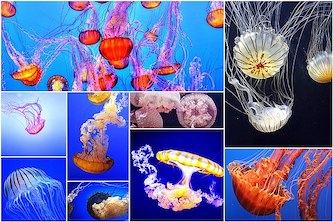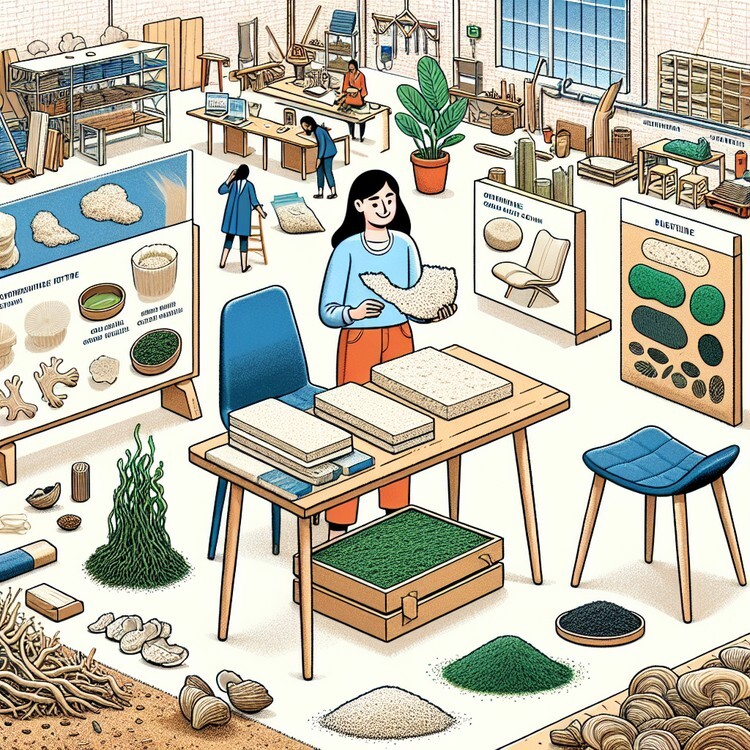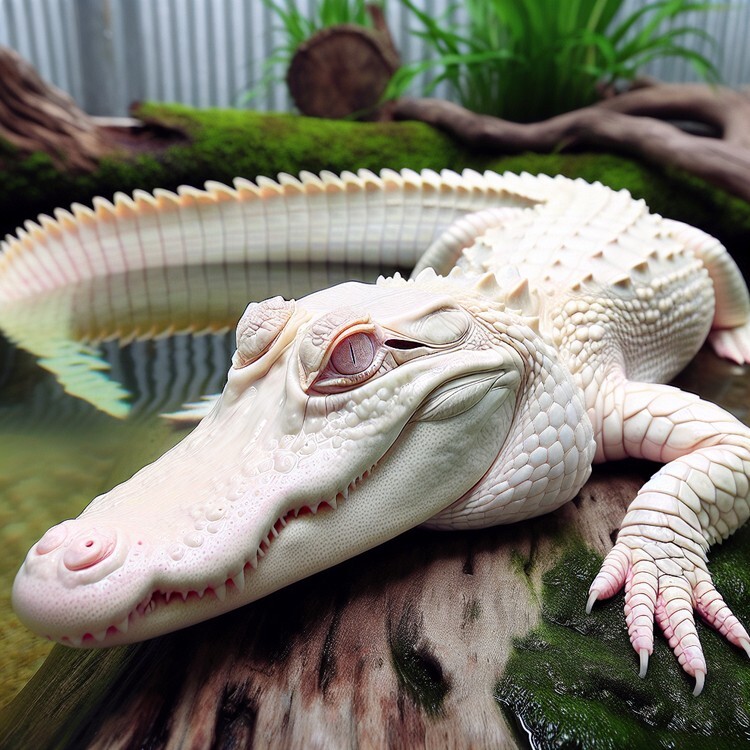A group that cares about the ocean found that there are more jellyfish in the sea and on the beaches in the UK than before. The sea is getting warmer because of climate change, and jellyfish like that. People saw a lot of big jellyfish called barrel jellyfish, and even some that usually live in warmer places. This might mean the sea is getting more like the tropics because it’s getting warmer.
People told the group about the jellyfish they saw using a website or an app. Most jellyfish were seen on the west side of the UK, like in Cornwall and Wales. There might be more jellyfish because the sea is getting hotter, and this could be a sign of changes that will keep happening. The group also found out that more turtles are being seen, including the biggest kind called leatherback turtles.
The experts think there are so many jellyfish this year because it was really hot in June. This made the sea just right for jellyfish. The world is getting warmer because of climate change, and this is changing the sea. It’s important to keep studying this to know what’s happening and what we can do about it.
Original news source: Boom in unusual jellyfish spotted in UK waters (BBC)
Listen
Slow
Normal
Fast
Group or Classroom Activities
Warm-up Activities:
– News Summary
Instructions: Divide the class into small groups. Have each group read the article and then work together to write a short summary of the main points. They should aim to create a summary that is no longer than four sentences. Once they are done, each group will present their summary to the class. This activity helps with reading comprehension and summarizing skills.
– Opinion Poll
Instructions: Write a series of statements on the board about the ocean and climate change, such as “The increase in jellyfish populations is a serious concern for marine life” or “We can take steps to reverse the warming of the oceans.” Students will move to different areas of the room based on whether they agree or disagree with each statement. This can lead to a discussion on why they hold their opinions, encouraging speaking and critical thinking.
– Sketch It
Instructions: After reading the article, each student will choose one aspect of the article, such as jellyfish, climate change, or marine life, and draw a picture that represents that idea. They can then show their drawings to a partner and explain why they chose to sketch what they did. This visual activity helps with vocabulary recall and encourages speaking practice.
– Keyword Hangman
Instructions: Choose keywords from the article (e.g., ocean, jellyfish, climate change, barrel jellyfish, tropics, leatherback turtles) and play a game of hangman with the class. This will help students to become more familiar with the vocabulary from the article in a fun and interactive way.
– Future Predictions
Instructions: Ask students to write down their predictions about the ocean and marine life for the next 50 years based on what they learned from the article. They can write about what they think will happen to jellyfish populations, how climate change will continue to affect the oceans, and what actions humanity might take. After writing, students will share their predictions with the class or in small groups, practicing future tense structures and discussing environmental issues.
Comprehension Questions:
1. What did the group care about that they found more of in the sea and on beaches in the UK?
2. Why are there more jellyfish in the sea now?
3. What is the name of the big jellyfish that people saw a lot of?
4. Where in the UK were most of the jellyfish seen?
5. Besides jellyfish, what other sea creature is being seen more often?
6. What happened in June that might have caused there to be so many jellyfish this year?
7. Why do experts think it’s important to keep studying the sea?
Go to answers ⇩
Listen and Fill in the Gaps:
A group that cares about the ocean found that there are more (1)______ in the sea and on the beaches in the UK than before. The sea is getting warmer because of climate (2)______, and jellyfish like that. People saw a lot of big jellyfish (3)______ barrel jellyfish, and even some that usually live in (4)______ places. This might mean the sea is getting more like the tropics because it’s getting warmer.
People told the group about the jellyfish they saw (5)______ a website or an app. Most jellyfish were seen on the west (6)______ of the UK, like in Cornwall and Wales. There might be (7)______ jellyfish because the sea is getting hotter, and this could be a sign of changes that will keep happening. The group also found out that more turtles are being seen, (8)______ the biggest kind called leatherback turtles.
The (9)______ think there are so many jellyfish this year because it was really hot in June. This made the sea just right for jellyfish. The world is getting warmer because of (10)______ change, and this is (11)______ the sea. It’s important to (12)______ studying this to know what’s happening and what we can do about it.
Go to answers ⇩
Discussion Questions:
Students can ask a partner these questions, or discuss them as a group.
1. What is climate change?
2. Do you like jellyfish? Why or why not?
3. How would you feel if you saw a lot of jellyfish at the beach?
4. Have you ever seen a jellyfish in the sea or on a beach? What did it look like?
5. What do you think about the ocean getting warmer?
6. Do you think it’s good or bad that there are more jellyfish now? Why?
7. Have you ever used an app to tell someone about something you saw in nature?
8. What is a turtle? Have you ever seen one?
9. Why do you think the sea being warm is good for jellyfish?
10. Do you think we should do something about the sea getting warmer? Why or why not?
11. How do you think animals in the sea feel about the water getting hotter?
12. What can we do to help the ocean and the animals that live there?
Individual Activities
Vocabulary Meanings:
Match each word to its meaning.
Words:
1. jellyfish
2. sea
3. climate
4. turtles
5. website
6. tropics
7. warmer
8. changes
Meanings:
(a) Not as cold as before
(b) A hot and wet area near the equator
(c) A large body of salty water
(d) The usual weather in a place
(e) A place on the internet where you can find information
(f) Reptiles that live in the ocean
(g) Things that are different from before
(h) A slimy sea creature with stinging tentacles
Go to answers ⇩
Multiple Choice Questions:
1. Why are there more jellyfish in the sea and on the beaches in the UK?
(a) There are more people reporting jellyfish sightings
(b) The sea is getting warmer because of climate change
(c) The sea is getting colder because of climate change
(d) The jellyfish are migrating from other countries
2. What kind of jellyfish have people seen a lot of in the UK?
(a) Barrel jellyfish
(b) Box jellyfish
(c) Moon jellyfish
(d) Lion’s mane jellyfish
3. Where have most jellyfish been seen in the UK?
(a) On the east side, like in London and Kent
(b) In the middle, like in Birmingham and Manchester
(c) In the north, like in Scotland and Northern Ireland
(d) On the west side, like in Cornwall and Wales
4. What other sea creatures have been seen more in the UK?
(a) Turtles
(b) Sharks
(c) Dolphins
(d) Whales
5. Why do experts think there are so many jellyfish this year?
(a) There are more people going to the beach
(b) It was really hot in June
(c) The sea is getting colder
(d) There are more jellyfish in other countries
6. How is the world changing the sea?
(a) It’s getting colder because of climate change
(b) It’s getting cleaner because of climate change
(c) It’s getting warmer because of climate change
(d) It’s getting deeper because of climate change
7. What is important to keep doing to understand the changes in the sea?
(a) Keep ignoring the sea
(b) Keep fishing in the sea
(c) Keep studying the sea
(d) Keep building on the sea
8. What could be a sign of changes that will keep happening?
(a) More people going to the beach
(b) More boats in the sea
(c) More icebergs in the sea
(d) More jellyfish in the sea
Go to answers ⇩
True or False Questions:
1. Most jellyfish were seen on the west side of the UK, like in Cornwall and Wales.
2. The group also found out that more turtles, including leatherback turtles, are being seen.
3. The ocean conservation group found that there are fewer jellyfish in the UK sea and on the beaches than before.
4. Experts think there are more jellyfish this year because it was really hot in June.
5. The sea is getting colder because of climate change, which jellyfish dislike.
6. People did not report the jellyfish they saw using a website or an app.
7. The world is not getting warmer because of climate change, which is not changing the sea.
8. It’s important to keep studying this to know what’s happening and what can be done about it.
Go to answers ⇩
Write a Summary:
Write a summary of this news article in two sentences.
Writing Questions:
Answer the following questions. Write as much as you can for each answer.
1. Why are there more jellyfish in the sea and on the beaches in the UK?
2. What kind of jellyfish are people seeing a lot of in the UK?
3. Where in the UK are most jellyfish being spotted?
4. Besides jellyfish, what other sea animal is being seen more often?
5. Why do the experts think there are so many jellyfish this year?
Answers
Comprehension Question Answers:
1. What did the group care about that they found more of in the sea and on beaches in the UK?
The group cares about the ocean and they found more jellyfish.
2. Why are there more jellyfish in the sea now?
There are more jellyfish because the sea is getting warmer from climate change, and jellyfish like warm water.
3. What is the name of the big jellyfish that people saw a lot of?
The big jellyfish is called the barrel jellyfish.
4. Where in the UK were most of the jellyfish seen?
Most jellyfish were seen on the west side of the UK, like in Cornwall and Wales.
5. Besides jellyfish, what other sea creature is being seen more often?
More turtles, including the biggest kind called leatherback turtles, are being seen.
6. What happened in June that might have caused there to be so many jellyfish this year?
It was really hot in June, which made the sea just right for jellyfish to live and grow.
7. Why do experts think it’s important to keep studying the sea?
Experts think it’s important to study the sea to understand what’s happening because of climate change and to know what we can do about it.
Go back to questions ⇧
Listen and Fill in the Gaps Answers:
(1) jellyfish
(2) change
(3) called
(4) warmer
(5) using
(6) side
(7) more
(8) including
(9) experts
(10) climate
(11) changing
(12) keep
Go back to questions ⇧
Vocabulary Meanings Answers:
1. jellyfish
Answer: (h) A slimy sea creature with stinging tentacles
2. sea
Answer: (c) A large body of salty water
3. climate
Answer: (d) The usual weather in a place
4. turtles
Answer: (f) Reptiles that live in the ocean
5. website
Answer: (e) A place on the internet where you can find information
6. tropics
Answer: (b) A hot and wet area near the equator
7. warmer
Answer: (a) Not as cold as before
8. changes
Answer: (g) Things that are different from before
Go back to questions ⇧
Multiple Choice Answers:
1. Why are there more jellyfish in the sea and on the beaches in the UK?
Answer: (b) The sea is getting warmer because of climate change
2. What kind of jellyfish have people seen a lot of in the UK?
Answer: (a) Barrel jellyfish
3. Where have most jellyfish been seen in the UK?
Answer: (d) On the west side, like in Cornwall and Wales
4. What other sea creatures have been seen more in the UK?
Answer: (a) Turtles
5. Why do experts think there are so many jellyfish this year?
Answer: (b) It was really hot in June
6. How is the world changing the sea?
Answer: (c) It’s getting warmer because of climate change
7. What is important to keep doing to understand the changes in the sea?
Answer: (c) Keep studying the sea
8. What could be a sign of changes that will keep happening?
Answer: (d) More jellyfish in the sea
Go back to questions ⇧
True or False Answers:
1. Most jellyfish were seen on the west side of the UK, like in Cornwall and Wales. (Answer: True)
2. The group also found out that more turtles, including leatherback turtles, are being seen. (Answer: True)
3. The ocean conservation group found that there are fewer jellyfish in the UK sea and on the beaches than before. (Answer: False)
4. Experts think there are more jellyfish this year because it was really hot in June. (Answer: True)
5. The sea is getting colder because of climate change, which jellyfish dislike. (Answer: False)
6. People did not report the jellyfish they saw using a website or an app. (Answer: False)
7. The world is not getting warmer because of climate change, which is not changing the sea. (Answer: False)
8. It’s important to keep studying this to know what’s happening and what can be done about it. (Answer: True)
Go back to questions ⇧












